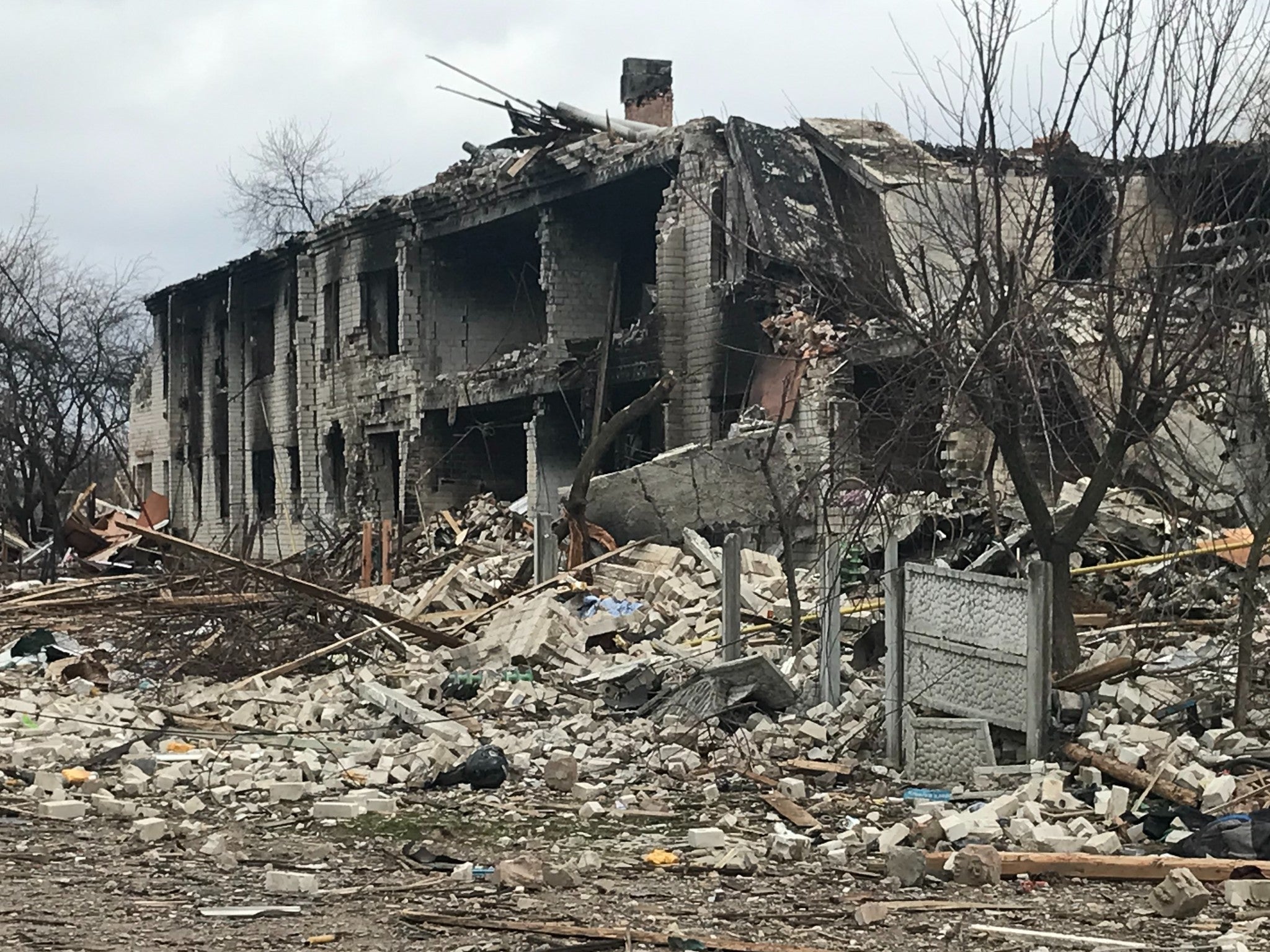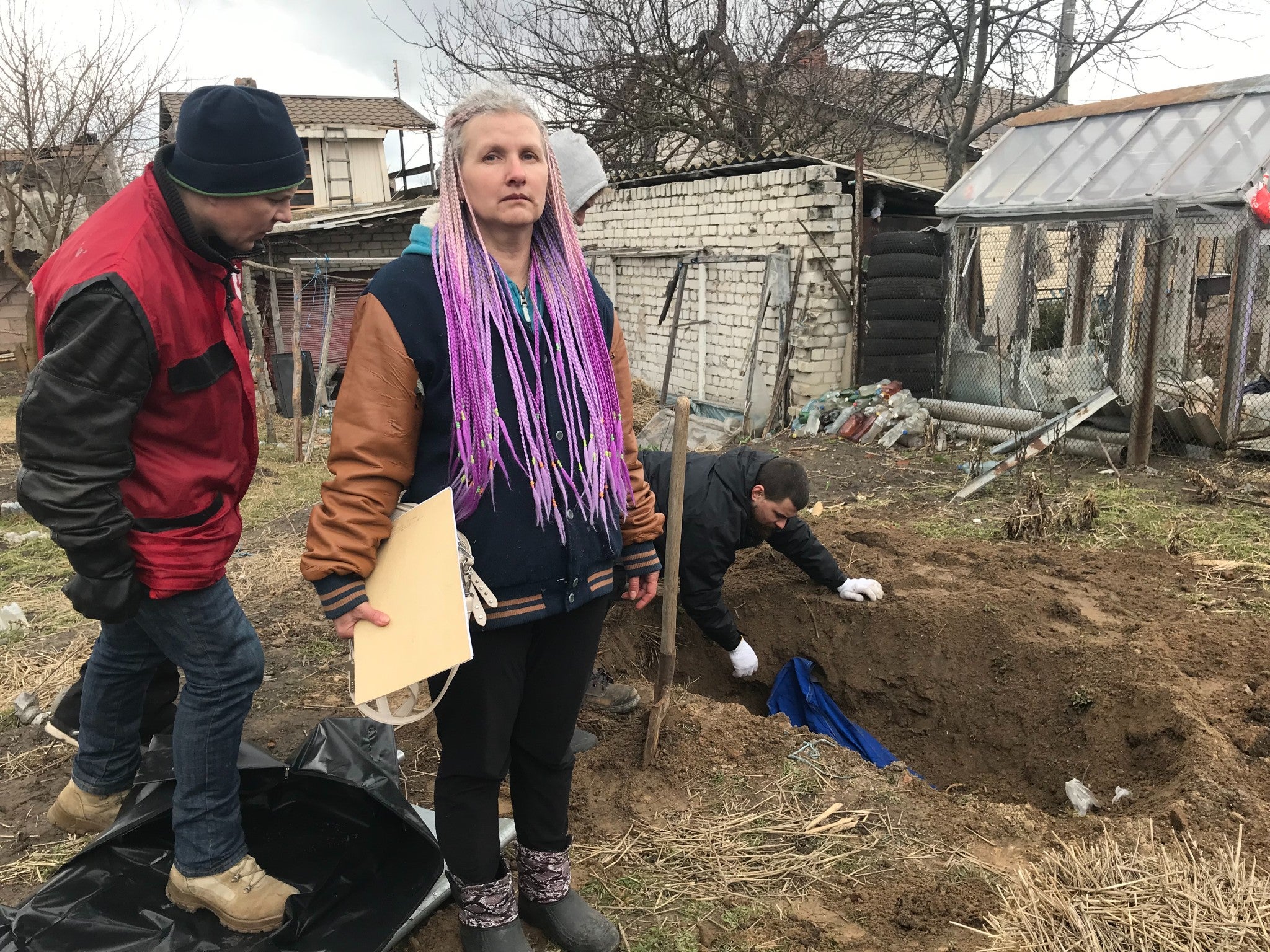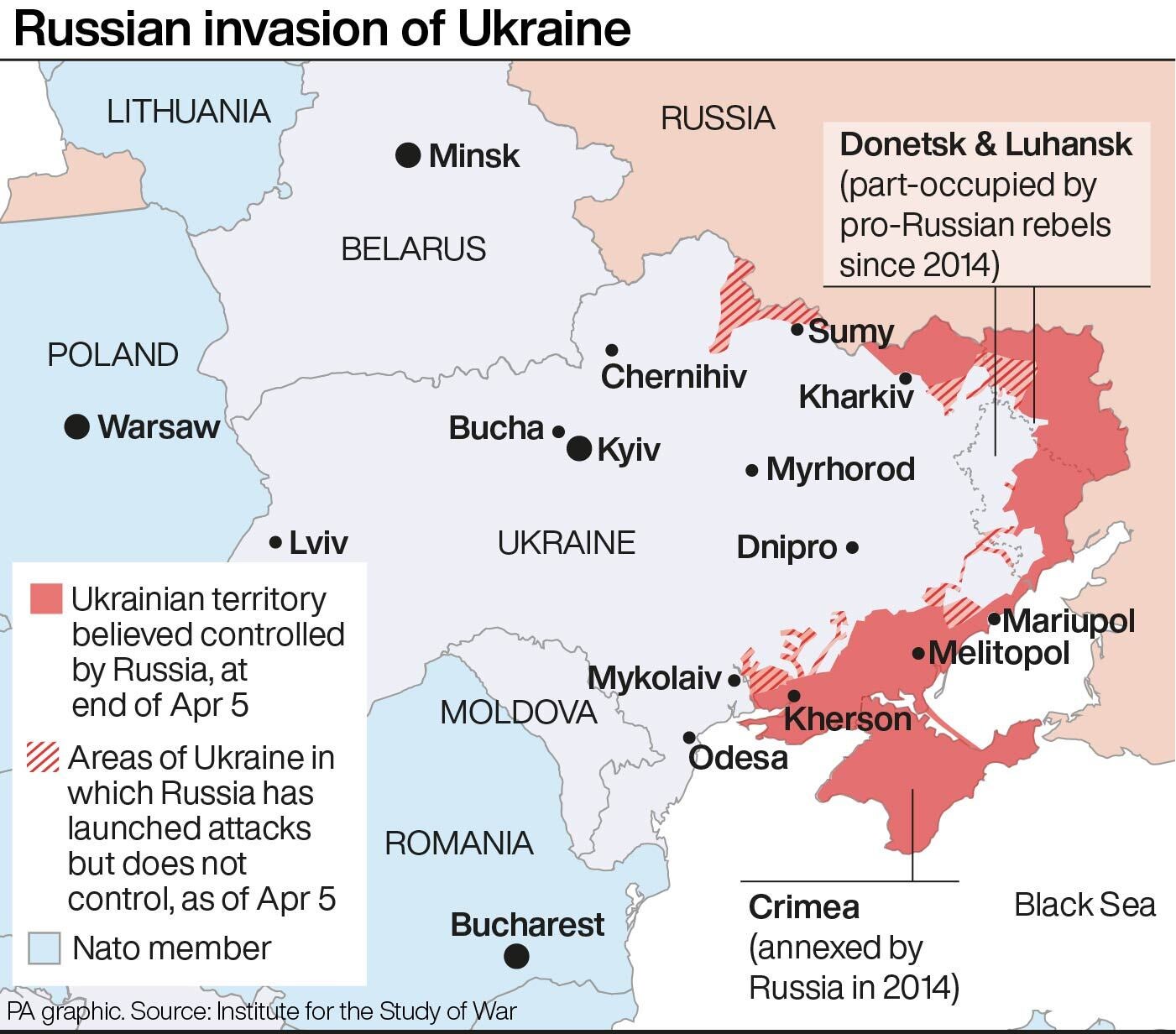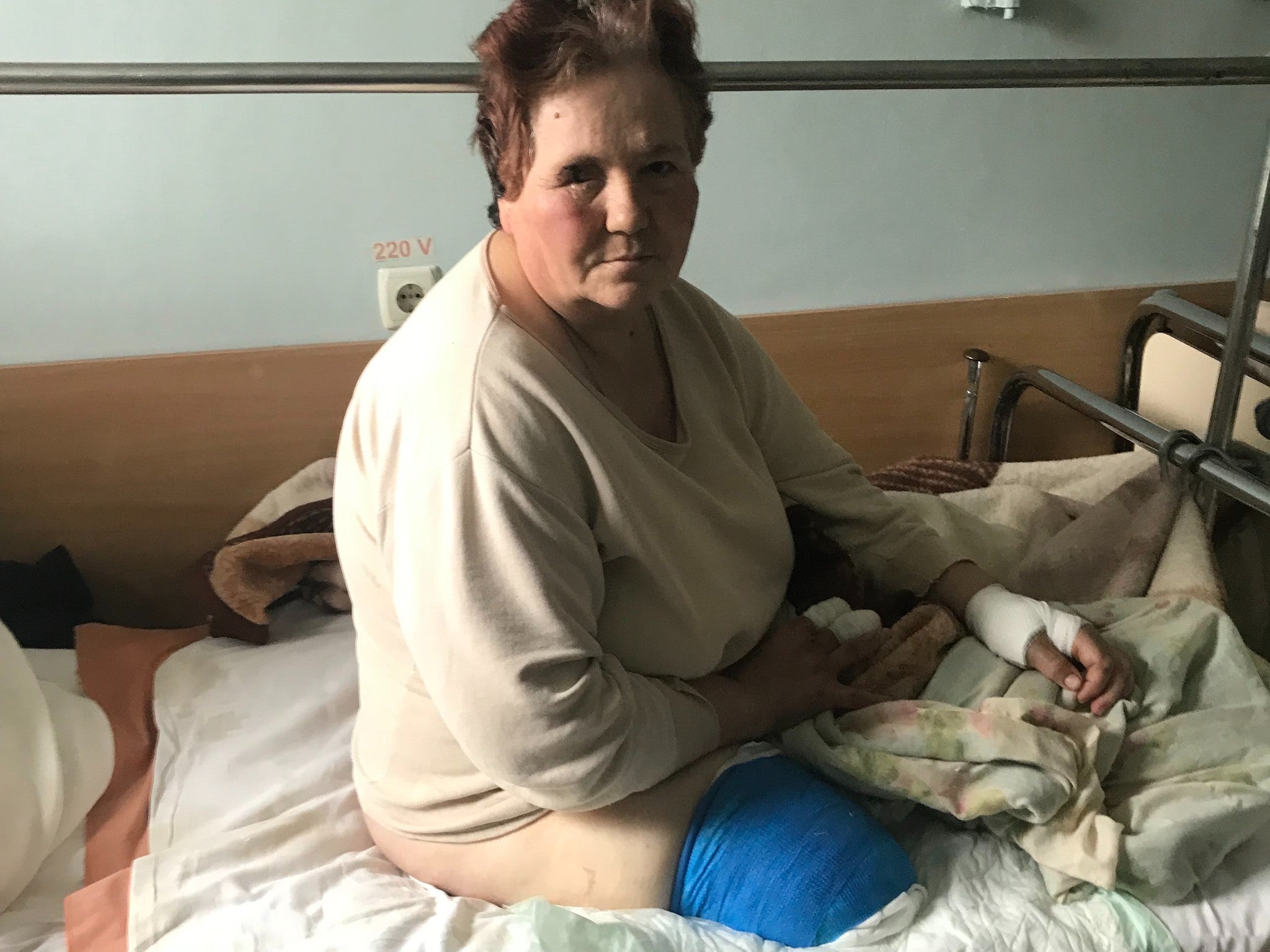‘We badly need help’: Inside Chernihiv, a city that’s paid a terrible price for resistance
Hundreds of civilians have been killed, with more believed to be buried under the rubble of destroyed buildings, leaving families grieving for their loved ones. Many are asking, what happens now? Kim Sengupta reports


Your support helps us to tell the story
From reproductive rights to climate change to Big Tech, The Independent is on the ground when the story is developing. Whether it's investigating the financials of Elon Musk's pro-Trump PAC or producing our latest documentary, 'The A Word', which shines a light on the American women fighting for reproductive rights, we know how important it is to parse out the facts from the messaging.
At such a critical moment in US history, we need reporters on the ground. Your donation allows us to keep sending journalists to speak to both sides of the story.
The Independent is trusted by Americans across the entire political spectrum. And unlike many other quality news outlets, we choose not to lock Americans out of our reporting and analysis with paywalls. We believe quality journalism should be available to everyone, paid for by those who can afford it.
Your support makes all the difference.Oksana Brin is weeping quietly as her father’s body is exhumed from his garden. A neighbour is rushing her family out of the house after finding an unexploded bomb in a bedroom, while another is staring at a torn-apart building he once called home, and wondering how he has survived, though his mother was severely injured.
This is Novoselivka after weeks of fighting and occupation by the Russians. Most of the village is no longer standing: swathes of smashed bricks, timber and glass lie on roads pitted with cavernous craters where massive bombs have been dropped. The village is just outside Chernihiv, 45 miles from the border with Belarus, and represents a key strategic location that the Kremlin needed to capture in order to secure its supply lines and launch an all-out assault on Kyiv, 91 miles to the south.
Chernihiv, besieged and bombarded, hung on, and is now back in Ukrainian hands, in a potent sign that Vladimir Putin’s supposed plan of “decapitation” – seizing the capital and driving out the government of Volodymyr Zelensky – has failed. But Chernihiv, a regional capital that was cut off from the rest of the country until now, has paid a terrible price for its resistance. Around 550 civilians are estimated to have been killed, with hundreds more believed to be buried under the rubble.
Seventy per cent of the city, with its great historic and religious heritage, has been demolished after days and nights of bombardment. More than half the population of 290,000 fled as the attacks continued relentlessly, electricity and water were cut off, and food stocks dwindled.
A number of churches have been razed. One, which was used as a civilian shelter, was destroyed by Russian airstrikes; the other by Ukrainian forces, who claimed the Russians were using it as a base. But two famous cathedrals, the Cathedral of the Transfiguration and St Catherine’s, have escaped damage.
The city’s close proximity to Belarusian airfields has enabled the Russians to use their warplanes with deadly frequency – something they have been unable to do further inland because of the effectiveness of Ukrainian air defences, which have shot down a large number of aircraft.

Many of the injuries and deaths have been caused by the use of unguided air weapons of the type that caused such devastation in another of the Kremlin’s conflicts – the war in Syria. One of the most lethal examples in Chernihiv was the massacre of 47 people who had gathered at the city’s central square on 3 March, when eight “dumb bombs” were dropped. There have also been numerous claims that the Russians used cluster munitions – bomblets that drop to the ground from the air unexploded, then go off on contact. Doctors at local hospitals showed fragmented, jagged pieces of metal that had penetrated bodies at close range.
Chernihiv’s mayor, Vladyslav Atroshenko, has likened what has happened to events in two other places that have become synonymous with the savagery and sorrow of this war. “Our city resembles Bucha and Mariupol. People have been wondering whether they will survive until the next day ... So many people have suffered,” he says.
Oksana Brin is trying to cope with her own personal grief in Novoselivka. Her 63-year-old father, Petro Kasinuk, was killed at his home in an airstrike two weeks ago. So relentless were the attacks at the time that it proved impossible to take his body to the graveyard a quarter of a mile away. Instead, he was hurriedly buried in the garden.
On Wednesday, officials from the city council came to the half-demolished house to take Mr Kasinuk away for reburial. He will be laid to rest in the civilian part of the village cemetery. The Russians have rolled tanks over the military section, making it look like a ploughed field full of broken coffins and gravestones.
“He was such a stubborn old man. I begged him so many times to go somewhere safer, but he just refused to leave,” Ms Brin says, tearfully recalling her father. “I asked him to move in with me so that I could at least keep an eye on him. My house was just over there, but he would not agree to that either.
“But my own house actually got bombed at the end. I had to hide in the basement with my six-year-old daughter as our home burned above us. I can just imagine, though, my father cursing away if he had given in and moved in with me and then the bombing took place,” she continues, the sobs turning to giggles.
A little further away, Anton Ryzyk’s home was pulverised during the same spate of intensive strikes before Russian troops moved in. He was sitting with his mother when the large house, which contained a number of flats, was bombed at around eight o’clock in the evening.
Mr Ryzyk, 33, escaped with minor injuries. His 64-year-old mother, Svetlana, was seriously wounded and received emergency surgery in nearby Nizhyn after being evacuated.
“Our home was somewhere in there,” he says, pointing at wreckage which was once a building. “This was done by two planes. We could hear them coming. They dropped two bombs, turned and flew away, then came back and dropped two more. I remember being thrown through the air, but little more after that.
“Why did they do this? I don’t know; maybe they thought that there were Ukrainian soldiers living around here – there was certainly a lot of military activity – or they simply did not care who they killed.”

Two doors away, Liliana Rohova frantically calls the police, the army, the fire service and, in the end, the sanitation department, to ask what is going to happen about an unexploded bomb she has found in her bedroom. It was hard to spot under a pile of clothes, only the tailfin protruding from beneath a coat.
Ms Rohova, 43, along with her husband Oleksyi and their family, moved away from Novoselivka after the initial attacks, to a cottage they own in Petrushan, another village in the region. Russian soldiers took over Petrushan soon afterwards. “At first they were all right, but when things started going badly for them, they started to suspect everyone of being spies,” says Ms Rohova. “They began to arrest people, beat them up for no reason. They took some people away; we never saw them again.”
The Rohovas say they remained in Petrushan, keeping as low a profile as possible, before returning to Novoselivka after it was recaptured by Ukrainian troops.
“And we found this, a house we spent 23 years building, so badly damaged and a bomb inside. We shall stay with relations for the time being,” says Ms Rohova. “But should we start rebuilding? How do we know the Russians won’t come back? They are still so near. What would happen if they came back?”
Mr Ryzyk has no doubt how the Russians would behave. “They would carry on as they did before. They shot people for things like breaking curfew. They were brutal and they would be angry because they had to leave,” he predicts. “But we are not going to let them back in – the army, the volunteer forces, the people of Chernihiv.”
Mr Ryzyk, a construction worker, is carrying a hunting rifle. He had an AK-47 semi-automatic weapon, which got destroyed in the blast. He is waiting, he says, to get a replacement for the next round of fighting that may lie ahead.
Mr Atroshenko, the mayor, is proud of the people of Chernihiv for resisting the Russian assaults, and for their part not just in protecting the city, but in dealing a major blow to Moscow’s plan to capture the capital. He urges caution, nevertheless, about assuming that the danger is past.
“We have survived and that is a great achievement. But what happens next? Can the Russians mount another attack? They continue to be present in Belarus in very large numbers. Will the airstrikes continue?” he wonders.
The mayor has implored President Zelensky not to proceed with a proposal for captured Russian pilots to be exchanged for Ukrainian prisoners of war. “Please, do not rush to exchange military pilots, those scumbags. They were destroying the civilian population; they were destroying Chernihiv residents in broad daylight, at low altitudes. It is not necessary to hurry to exchange these bastards. Our air defences remain active, but we all remain at risk,” he said in a statement.

Mr Atroshenko is fully aware of the risks. He believes that the Russians tried to assassinate him. Two missile strikes took place as he worked in his office, shattering windows and sending shards of glass flying across the room, as he dived to the floor.
This is not an improbable scenario. Significant numbers of local officials have been targeted by the Russians: some have been killed, others were abducted and have disappeared. Among the bodies found in mass graves near Bucha earlier this week was that of Olga Sukhenko, the mayor of the nearby town of Motzyhn, along with those of her husband and son. Her fingers and arms were broken, according to the mayor of the next town, Kopyliv.
A number of graves of civilians have been found in the areas around Chernihiv that had been under occupation. The bodies of around 20 Russian soldiers were moved to the main mortuary on Tuesday. Space was created for them by interring 65 others in a trench at the beginning of the week.
Staff at Chernihiv’s three hospitals describe a perfect storm after the invasion began on 24 February. Casualties, civilian and military, were coming in by the hour, in ambulances, buses, private cars, or being carried. Doctors had to conduct major operations without power or water, until volunteers arrived with generators.
Chernihiv’s main regional hospital took in more patients than the other two combined. Doctors Oleh Luzan and Svetislav Pavlenko, both heads of departments, are among the medical personnel who have been living in the hospital ever since, with no more than a few hours’ sleep a night.
Dr Luzan was not surprised by the outbreak of war. “We have been seeing warnings from the US and UK and other countries that this will happen. I know there are people who did not believe this, but I think that’s because people don’t want to think about bad things happening,” he says.
“What did surprise me was how indiscriminate the attacks were, the number of civilians we had to deal with. A lot of them suffered bad injuries, a lot of them died,” he adds.
One of the patients at the hospital, Antonina Budnik, has lost a leg and may lose her sight in one eye. Her house in Yatseva district, where she lived with her 80-year-old mother, was bombed on 22 March.

“We had gone down to the basement when there was this huge blast and everything shook. I could feel pain throughout my body and blood began to come out,” she recalls. “I was worried about myself, but I was also worried about my mother.”
Ms Budnik managed to drag both herself and her mother, also called Antonina, out of the house. They were found slumped by Ukrainian troops, who gave what emergency medical help they could and called for an ambulance to take the two women to hospital. But there was a sudden outbreak of shooting, and the women were left sitting on the pavement against a wall while soldiers took up positions to fire back.
“They had given me a painkilling injection, and I was drifting in and out,” says Ms Budnik. “I could hear the bullets flying around and thought I was seeing an action film, a dream. The fighting stopped after a while. They took me and my mother to the hospital in a car. I have got these injuries, but the doctors and nurses have saved me and I’ll make full use of the rest of my life.”
Oleksyi Kalyk, 70, was brought to the hospital just in time. He received chest wounds on 15 March during strikes in Roishche, another district that had passed into Russian hands. He lay in his house without medical treatment for days until the area was retaken by Ukrainian troops.
“It was not safe to go out, even when one was injured, while the Russians were there. They were very quick to shoot and I was scared,” he says. “I thought, I am old, I would rather die at home than get shot on the street. But then the Russians were gone, thanks be to God.”
Dr Luzan has no doubt that Mr Kalyk got medical aid just in time: “In his condition, I fear it would have been the worst if he had been left at home. We expect others to come in like this from the occupied areas; we need to prepare, make sure we get the necessary supplies in stock.”
It has been far more difficult to get emergency supplies to Chernihiv than to other stricken areas. The main bridge across the river, and another over a stream, have been blown up, and convoys have to cross them on pontoons, leading to huge tailbacks on the narrow approach roads.
“We need to repair these bridges – the city badly needs help,” says Captain Nicolai Bodnar, a member of a volunteer battalion. “Mind you, they may get destroyed again if the Russians try to come back. But let’s hope we have chased them away for good and they have learnt their lesson in Chernihiv.”



Join our commenting forum
Join thought-provoking conversations, follow other Independent readers and see their replies
Comments